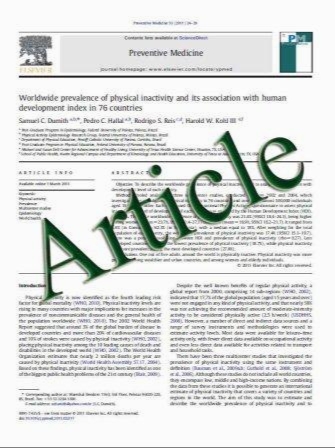The reliability and validity of three non-radiological measures of thoracic kyphosis and their relations to the standing radiological Cobb angle
- نوع فایل : کتاب
- زبان : انگلیسی
- مؤلف : G. A. Greendale & N. S. Nili & M.-H. Huang & L. Seeger & A. S. Karlamangla
- چاپ و سال / کشور: 2010
Description
Summary Hyperkyphosis is implicated in a mounting list of negative outcomes, including higher mortality. Hyperkyphosis research is hindered due to difficulties inherent in its measurement. By showing that three clinical measures of kyphosis are suitable for use in large scale, longitudinal, hyperkyphosis studies, we will facilitate much needed research in this field. Introduction The objective of this study is to describe the reliability of three non-radiological kyphosis measures (Debrunner kyphosis angle, flexicurve kyphosis index, and flexicurve kyphosis angle) and their validity compared to the Cobb angle and to approximate a Cobb angle from non-radiological kyphosis measures. Methods We analyzed data from 113 participants aged .60 years with kyphosis angle .40پ‹. Cobb angle was measured on a standing lateral thoracolumbar radiograph using bounds at T4 and T12. Non-radiological measures of kyphosis were made three times by a single rater and a 4th time by a blinded second rater. Results Intra- and inter-rater reliabilities for non-radiological assessments were high (intra-class correlations of 0.96 to 0.98) and did not differ from each other. Pearson correlations, estimating validity, ranged from 0.62 to 0.69 and did not differ. The Debrunner angle was close to the Cobb angle, with scaling factor of 1.067 and an offset of 5پ‹. The Flexicurve kyphosis angle had to be scaled by 1.53 to obtain the equivalent Cobb angle. The scaling factor for the Flexicurve kyphosis index to Cobb angle was 315, with an offset of 5پ‹. Compared to the measured Cobb angle, Cobb angles predicted using the non-radiological measures had similar magnitude errors (standard deviations of the differences ranging between 10.24 and 11.26). Conclusions Each non-radiological measurement had similar reliability and validity. Low cost, ease of use, and robustness to variations in spine contour argue for the Flexicurve in longitudinal kyphosis assessments. The approximate conversion factors provided will permit translation of non-radiological measures to Cobb angles.
Osteoporos Int (2011) 22:1897–1905 DOI 10.1007/s00198-010-1422-z Received: 25 May 2010 / Accepted: 9 September 2010 / Published online: 12 October 2010


